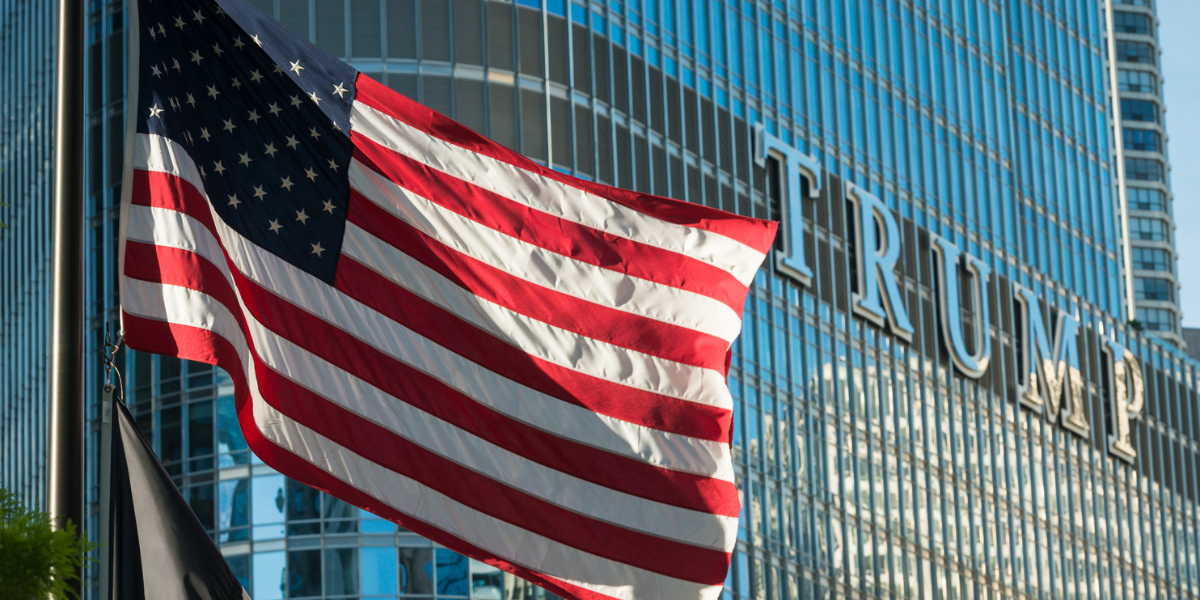The Asia-Pacific commercial real estate landscape is undergoing its most profound transformation since the 2008 global financial crisis. Unlike cyclical market corrections or pandemic-driven disruptions, today's changes stem from a fundamental reordering of the global trade architecture that demands strategic, not merely tactical, responses from investors, developers, and corporate occupiers.
Knight Frank's Horizon Report, "From Whiplash to Resilience: Corporate Real Estate in the New World Order" documents that this is not just another market fluctuation; it is a structural shift creating new rules for how real estate decisions must be approached across the region. Understanding these changes requires looking beyond immediate market metrics to the geopolitical forces reshaping the economic landscape within which commercial real estate operates.
From targeted measures to systemic shifts: Understanding Trump 2.0's tariff regime
The current wave of protectionism bears little resemblance to its predecessor. During Trump's first term (2017-2020), tariffs targeted specific countries (primarily the Chinese mainland and Europe) and industries (steel, aluminium, washing machines, and solar panels), with Chinese goods facing an effective tariff rate of 19.3% and the rest of the world 3.1%. The economic impact was relatively contained, shaving approximately 0.2% from US GDP.
Trump 2.0 represents a difference in both scope and intensity. The new administration has widened its target to 57 countries, with escalating rates. While Chinese mainland goods initially faced a staggering 145% effective tariff rate under the April 2 announcement, the recent May 12 agreement has temporarily reduced this to 30% for a 90-day negotiation period. Similarly, the global average rate has been moderated for this window. These measures still affect an unprecedented US$2.3 trillion in imports (compared with US$380 billion) and generate significant tax revenue, though at reduced levels during the negotiation period. The projected GDP impact remains substantial, though likely moderated by the temporary tariff reduction.
The legacy of trade war I: Resilience that masked deeper vulnerability
Before exploring the current impact, let's examine how markets responded to the first trade war. Despite aggressive tariffs under the first Trump administration, US businesses operating in the Chinese mainland remained largely unfazed. By 2021, nearly 80% of American firms expressed confidence in their five-year outlook, with sentiment levels rebounding close to pre-trade war norms. Notably, 72% of US manufacturers in the Chinese mainland reported no intention to relocate operations within the next three years, a testament to the latter's entrenched industrial ecosystem.
For the more cautious, “China+1” strategies emerged as a risk-mitigation approach, with companies establishing complementary operations in Vietnam, Indonesia, or India while maintaining their Chinese mainland presence. The approach worked: despite trade tensions, world exports continued to rise as shifting trade linkages mitigated the full effects of tariffs. Southeast Asia emerged as the primary beneficiary, particularly Vietnam, where logistics demand soared with rents rising by an average of 17.2% from 2020 to 2024.
This resilience, however, masked deeper vulnerabilities. The strategies that worked during Trade War I, targeted diversification, pricing adjustments, and incremental adaptation, are proving insufficient in the face of Trump 2.0's comprehensive approach. Today's wide-ranging tariffs, even at temporarily reduced rates, have addressed “China+1” loopholes and are reassessing global supply chains more fundamentally.
Three strategic certainties in an era of uncertainty
While forecasting specific policy developments remains challenging, our analysis identifies three ‘strategic certainties’ that provide a framework for understanding the commercial real estate impact:
1. Higher tariffs are the new baseline
Even with the temporary reduction to 30% for Chinese goods and proportional decreases for other countries during the 90-day negotiation period, tariff levels remain significantly higher than historical norms. The effective tariff rate in the US still exceeds levels not seen since the 1970s. The May 12 agreement provides breathing room for businesses but doesn't signal a return to pre-2025 trade patterns.
This entrenchment of tariffs as a structural tool of economic statecraft represents a turning point in global trade dynamics. Unlike the narrower scope of the first trade war, the current tariff framework applies sweeping levies that are explicitly designed to reshape manufacturing footprints and supply chain configurations. The era of liberal trade that culminated with the WTO's rise is firmly behind us, with the temporary 90-day window representing an opportunity for recalibration rather than a fundamental shift in policy direction.
For commercial real estate, this means persistent cost inflation across global supply chains and an erosion of predictability that had underpinned location decisions for decades. Developers must recalibrate rent expectations, anticipate slower leasing cycles in trade-exposed hubs, and prepare for a marketplace where flexible terms and exit options command premium value, even during the reduced tariff period.
2. US–China decoupling will redraw the real estate map
What began as targeted trade tensions has evolved into comprehensive economic decoupling. Despite the temporary tariff reduction, the current administration's policies are accelerating separation in trade, technology, capital flows, and talent mobility. Blanket tariffs on automobiles and electronics, even at reduced levels, and an expanding web of national security controls are severing supply chains that once bound the world's two largest economies.
Strategic sectors such as semiconductors, electric vehicles, advanced batteries, pharmaceuticals, and artificial intelligence are rapidly localising, with Western and Chinese mainland ecosystems developing on increasingly divergent tracks. This bifurcation creates a fundamentally different real estate landscape, with R&D and manufacturing re-shoring to the US, Mexico, and India. At the same time, the Chinese mainland doubles down on self-sufficiency, with demand concentrated in AI, green technology, and domestic consumption.
Corporate real estate portfolios built for a globalised world must now be reconfigured for operational resilience, regulatory compliance, and geopolitical flexibility, a transformation that will drive location decisions through and beyond the 90-day negotiation window. This isn't merely about cost optimisation but strategic positioning in an increasingly bifurcated global economy.
The impact extends beyond manufacturing to knowledge sectors. Research centres once concentrated in global innovation hubs are being duplicated across regions to ensure intellectual property security and regulatory alignment. Office footprints are being reconfigured to reduce cross-border dependencies and strengthen regional self-sufficiency. These shifts are creating new patterns of demand that fundamentally alter the calculus of location decisions and portfolio configuration.
3. Supply chain diversification is no longer optional
Despite the temporary tariff reduction, the strategic logic of “China+1”, maintaining primary operations on the Chinese mainland while establishing a backup location, has given way to a more comprehensive “China+N” model. In this new paradigm, multi-country sourcing and flexible production networks are standard operating requirements, not cautious contingencies.
While tariffs on Chinese exports have been temporarily reduced from 145% to 30%, the rest of Asia-Pacific, particularly Southeast Asia and India, retains tariff advantages that continue to make diversification attractive. Even as export-dependent economies such as Vietnam operate the complexity of the 90-day window, the broader diversification trend sustains inbound investment. Chinese manufacturers have funnelled over US$6 billion into Vietnam and Indonesia in 2024 alone, while logistics demand in Vietnam grew 17.2% between 2020 and 2024, reflecting a region-wide shift in production nodes that continues despite the temporary tariff reduction.
This diversification imperative is driving demand for flexible logistics parks, lease structures with built-in options, and sites that can easily scale up or down as needs evolve. Areas near ports and free-trade zones are drawing particular interest, while speculative projects in the Chinese mainland may see temporary relief during the reduced tariff period. For both occupiers and developers, agility, in terms of physical infrastructure, financial commitments, and contractual structures, has become the defining feature of real estate strategy.
The new geography of corporate real estate: Supply chain aftershocks
These three strategic certainties are triggering cascading effects across Asia-Pacific economies, with impacts falling into two distinct categories:
Direct impacts: Economies where the US comprises a significant portion of the export base remain directly affected by higher tariffs, though at temporarily reduced levels. These include Vietnam, which faces evolving trade-related considerations despite recent growth, and Japan, South Korea, and Thailand, whose substantial automobile exports to the US still face elevated tariffs despite the reduction.
Indirect effects: Trade-reliant economies highly integrated into global networks continue to face significant second-order effects, though potentially moderated during the negotiation period. Hong Kong SAR, Singapore, and Malaysia, where exports constitute more than 50% of GDP, remain exposed to these indirect impacts, which propagate through multiple channels:
- Spillover effects from adjusting economies with direct exposure
- Ongoing exposure through global value chains and trade-related services
- Potential feedback loops from policy responses during and after the negotiation period
Knight Frank's latest Global Corporate Real Estate Sentiment Index (GCRESI) provides additional evidence of these shifting dynamics. The index had initially shown promising growth, rising +3.03 points to 36.69, its first net-positive reading since mid-2022, but sentiment declined sharply following the April 2 tariff announcement. Responses gathered after the announcement showed overall sentiment falling -1.01 points, effectively halving the gains recorded in Q1.
All three sub-indices suffered: the Growth sub-index fell -0.32, the Portfolio sub-index dropped -0.24, and the Workplace sub-index decreased -0.45. Key indicators reversed course, with relocation sentiment dropping -0.30, office design considerations falling -0.30, and offshoring expectations declining -0.19.
While specific policy developments remain unpredictable, the structural direction is clear. Success in this environment will require tactical adaptation and strategic realignment; rethinking portfolio configurations, development approaches, and leasing structures to match a fundamentally different economic landscape.
For more insights, please download the latest edition of Knight Frank’s Asia-Pacific Horizon series, Whiplash to Resilience: Corporate Real Estate in the New World Order, report below.
.png?width=1200&name=Bottom%20(1).png)






